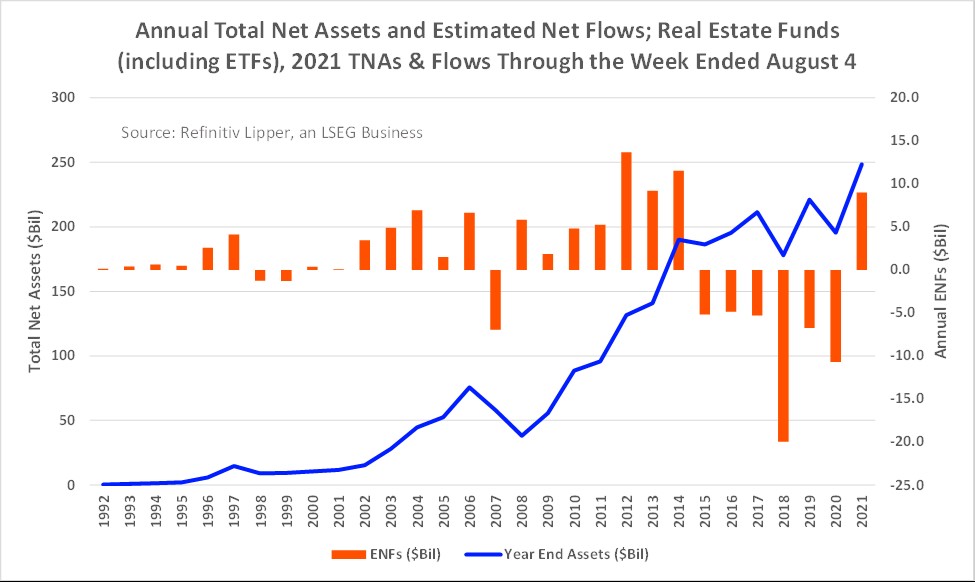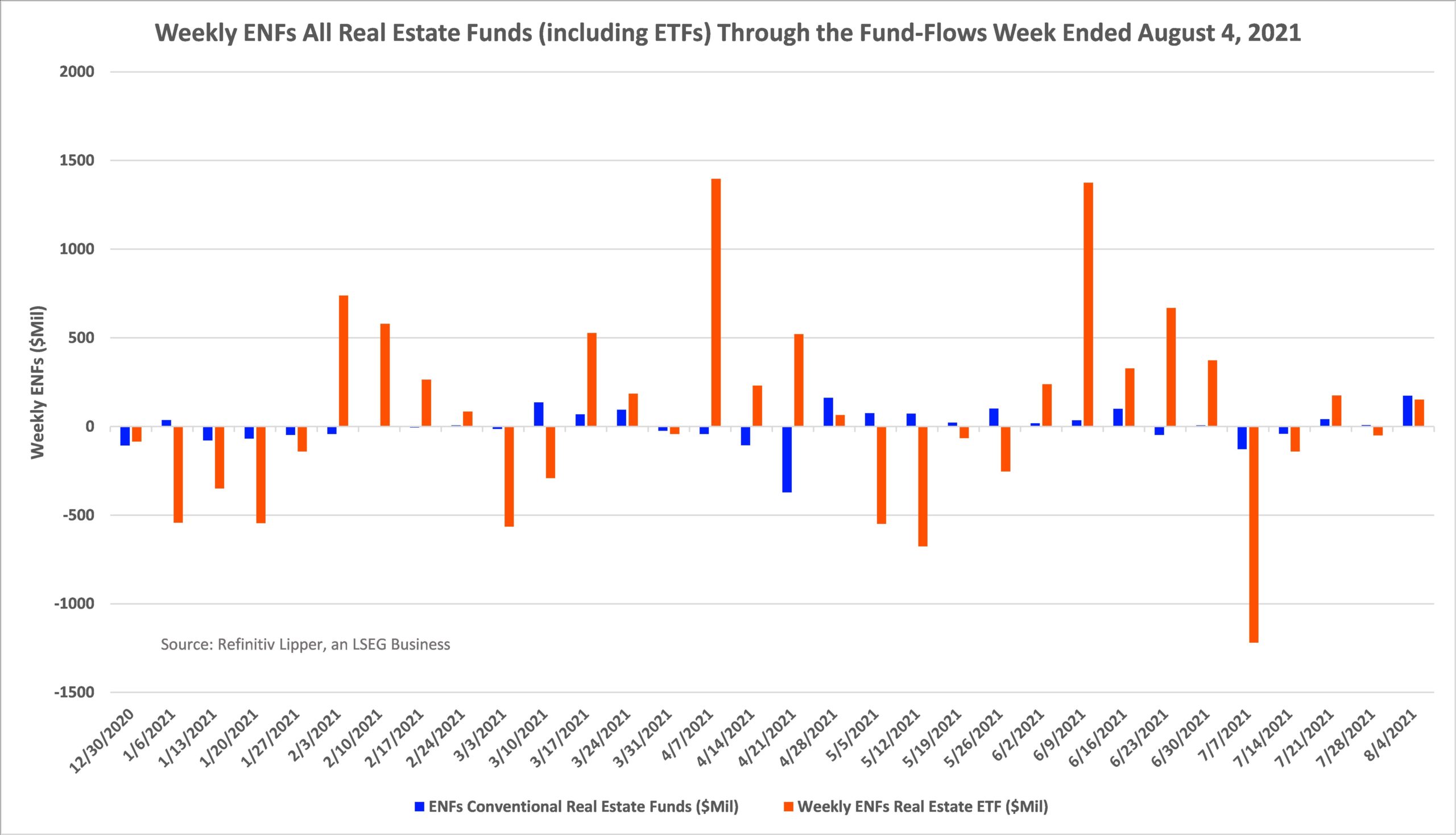As investors slowly rotate out of the stay-at-home and tech stocks, out-of-favor issues have gained momentum. Year-to-date through the period ended Aug. 5, 2021, the average equity fund has posted a 14.03% return. However, with Treasury rates moving lower despite increasing inflation pressures and coronavirus cases on the rise, the move to out-of-favor issues has waxed and waned.
This is because investors are attempting to assess the direction Federal Reserve Board policymakers will take and how the new Delta strain of the coronavirus will impact the reopening efforts of the global economy.
While the average Energy MLP Fund (+30.09%), Natural Resources Fund (+27.18%), and Financial Services Fund (+25.20%) are still at the top of the charts year-to-date, low Treasury rates have been a tailwind for technology issues once again, with growth-oriented and science and technology issues gaining ground in July and the first few trading days of August.
And even though Financial Services Funds (+3.96%) and Global Financial Services Funds (+4.22%) have remained strong over the last four weeks, rising concerns and increasing infection rates of the Delta variant of the coronavirus appeared to have weighed on energy-related issues as investors evaluate the health of global economy and future oil needs. Energy MLP funds (-4.54%) and Natural Resources Funds (-6.73%) suffered the largest losses in the equity universe for the four-week period ended Aug. 5.
However, with inflation appearing to raise its ugly head, even if only transitory in nature, housing and rental markets have been on a tear. According to Apartment List, the national median rent has risen 11.4% over the past year, attributed to soaring housing prices. Year-to-date, the average Real Estate Fund (+25.65%), Global Real Estate Fund (+20.99%), and International Real Estate Fund (+11.10%) have posted relatively strong returns and moved toward the top of the leaderboard over the last four weeks, returning 3.38%, 3.23%, and 1.60%, respectively.
In its mid-year 2021 outlook, Nareit’s research team states “this will be a period of robust economic growth that will drive recovery across a broad range of real estate and REIT sectors.” And while office use is still in question, with many firms still requiring their employees to work from home or preparing a hybrid work plan, Nareit believes “REITs are well positioned to take advantage of a growing economy because they entered the crisis with historically strong balance sheets and access to credit and liquidity.”
Flows into Real Estate Funds have been relatively strong year-to-date, attracting just a little less than $9.0 billion, witnessing net inflows for the first year since 2014. For the Refintiv Lipper fund-flows week ended Wednesday, Aug. 4, 2021, Real Estate Funds (+$323.7 million, including ETFs) took in net new money for the second week in three.
As with other equity classifications, Real Estate ETFs have been the main attractor of investor assets year-to-date, attracting $6.9 billion, while their conventional fund brethren took in $2.1 billion. On the ETF side, Vanguard Real Estate Index Fund ETF (NYSE:VNQ))—attracting $4.3 billion of net new money—attracted the largest amount of net inflows year-to-date, followed by The Real Estate Select Sector SPDR Fund [(NYSE:XLRE), +$1.1 billion].
On the conventional funds side, Cohen & Steers Institutional Realty Shares (CSRIX) and Cohen & Steers Real Estate Securities Fund, Class I (CSDIX), taking in $923 million and $540 million, respectively, took in the largest flows so far for the year.


